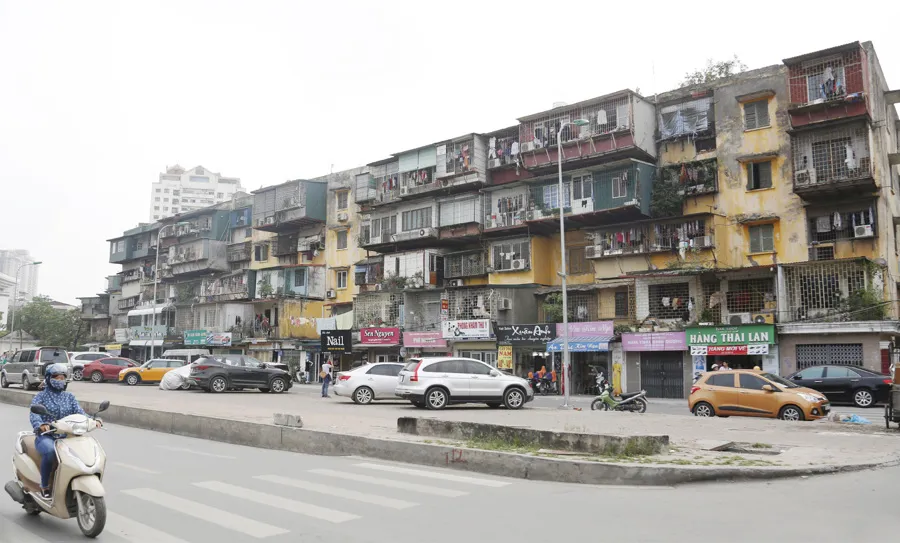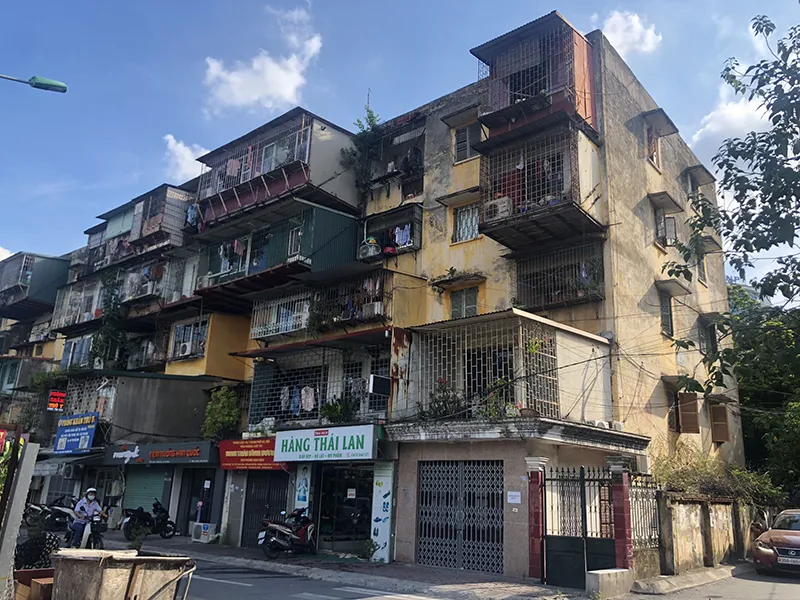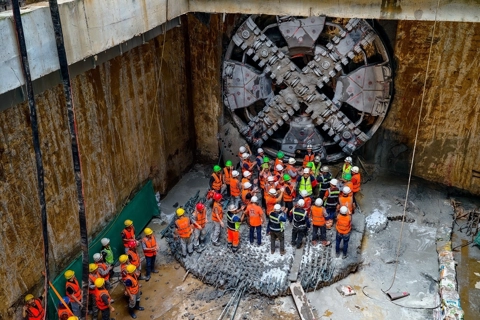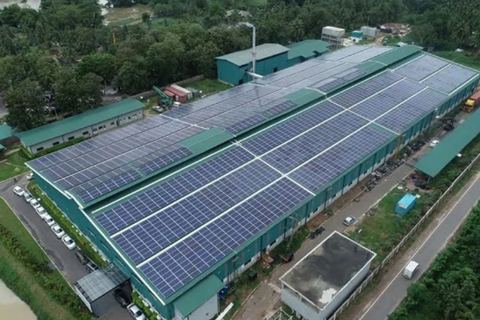Hanoi presses ahead with renovation of old housing stock
Hanoi has allocated funds to districts to inspect old apartment buildings and draw up detailed and overall renovation plans.
The project to renovate old apartment buildings is one of Hanoi's key urban redevelopment initiatives, significantly enhancing the city's aesthetic landscape.
| An old apartment block in Ba Dinh District, Hanoi. Photo: Thanh Hai/The Hanoi Times |
Urgent needs
According to statistics, in the Thanh Xuan Bac ward alone, there are nearly 70 apartment buildings, with 60 of them being old five-storey buildings that have been in use since the early 1980s. Like other old apartment complexes in the city, residents of the Thanh Xuan Bac collective housing area have expanded their living spaces with makeshift "tiger cages" as family sizes have grown.
This unauthorized expansion poses safety risks to the building's structure and could be dangerous in a fire. Additionally, these alterations are aesthetically detrimental to the urban landscape in the heart of the capital.
Tran Thanh Sang, residing in Room 501, Building B6, Thanh Xuan Bac Apartment, said that most of the buildings in this area, like B4, B5, and B6, have existed for nearly 40 years. Many structural components have deteriorated, including the water supply systems, which are inconsistent across buildings.
Moreover, the drainage systems are not regularly maintained, leading to blockages that have a direct impact on the environment. The small room sizes in these collective housing areas cannot accommodate a growing family.
"Although Building B6 is deteriorating, many families, including mine, choose to stay because the area is centrally located, with convenient amenities, schools, and markets," Sang said.
Commenting on the city's and Thanh Xuan District's initiative to renovate old apartments, Sang expressed that the government's attention to and prioritization of renovating old collective housing is a sensible and popular policy.
“Not only our family but most residents in Building B6 support the authorities' efforts to renovate and rebuild old apartment buildings,” he continued.
Some residents of Building B13 in Thanh Xuan Bac noted that there have been many surveys regarding the renovation, but the project has yet to be implemented.
To accelerate the renovation and reconstruction of old collective housing, residents hope the authorities will soon find a solution that balances the interests of the state, investors, and residents.
Putting plan into action
Nguyen Duy Linh, Head of the Urban Management of Thanh Xuan District, stated that in recent years, the district has focused heavily on urban redevelopment, with the renovation of old apartments being a top priority. To expedite progress, the district has been actively addressing obstacles and resolving issues in the 1/500 detailed planning process.
Specifically, the district has tasked the district’s Project Management Board with developing detailed 1/500 plans for renovating and rebuilding old apartment buildings.
The district has also communicated with the Department of Natural Resources and Environment and the Department of Planning and Architecture regarding the boundaries, scope, and scale of detailed planning for six old apartment blocks (Thanh Xuan Bac, Thanh Xuan Nam, Thuong Dinh, Kim Giang, Khuong Trung, Thanh Xuan Trung) and the planning of six others.
| The condition of the G6B Thanh Cong Apartment Block has been getting worse over the years. Photo: Thanh Luan/The Hanoi Times |
On April 10, 2024, Hanoi's People's Committee issued Decision No. 1910/QD-UBND, allocating funds to districts for inspecting old apartments and preparing detailed and overall renovation plans. Following this, Thanh Xuan District's People's Committee issued Decision No. 886 on April 19, 2024, to adjust and supplement the contractor selection plans.
"After the consulting unit completes the planning tasks, the district will seek approval from the Department of Planning and Architecture and proceed with the next steps," Linh stated.
The district has carried out surveys and compiled inventories of old apartment buildings, which have been submitted to the appraisal council for evaluation. Requests for updates, additions, and adjustments to these buildings have also been made.
Additionally, it has provided guidance on how to maintain these old apartments and worked with the Hanoi Institute of Science, Technology, and Construction Economics to inspect 44 apartment blocks.
So far, the district has had the first round of inspections of old apartments evaluated by the appraisal council, submitted for the second round of inspections, and is in the process of selecting contractors for the third round of consulting, surveying, inspecting, and evaluating the current quality of old apartment complexes.
To ensure the project's feasibility, Thanh Xuan District follows the city's directive of uniformly renovating and rebuilding old apartment blocks, contributing to a more modern urban landscape for both the city and the district.
According to the Ministry of Construction, there are more than 2,500 old apartment complexes nationwide, with Hanoi having the largest share of 1,579 complexes, followed by Ho Chi Minh City. These buildings, mostly constructed between the 1960s and 1990s, have a structural lifespan of 50-70 years and were built with outdated construction technology.
Many buildings have severely deteriorated over time, exacerbated by the fact that residents have expanded their living spaces, increasing the load on already unsafe structures. Despite being aware of the risks, financial constraints force many families to continue living in these buildings, putting their lives at risk. Meanwhile, renovation efforts have been sluggish.
In Hanoi alone, out of 1,579 old apartment complexes, dozens are in critical condition, including six classified as level D (the most dangerous), which need to be demolished and rebuilt. These include buildings like C8 Giang Vo, G6A Thanh Cong, and A Ngoc Khanh.












